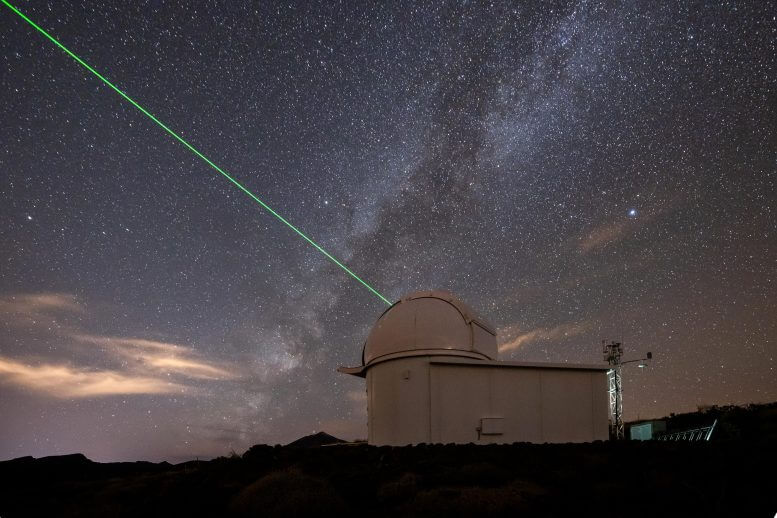The European Space Agency's station in Tenerife is a technology testing facility and an essential first step in making waste reduction widely accessible to all players in space who have an impact on the future of our space environment * It will be able to track satellites even in the sky today

ESA's (European Space Agency) Izaña-1 laser ranging station in Tenerife, Spain recently underwent months of testing and commissioning, successfully completing final tests. Upon reaching the "station acceptance" stage, it was handed over to ESA by the German contracting company that built it, Diguz. The station is a technology testing facility and an essential first step in making waste reduction widely available to all players in space who have an impact on the future of our space environment.
Imagine lasers pointing from the ground to the sky, looking for satellites and pieces of space debris, and measuring their location and trajectory to avoid catastrophic collisions. You don't have to try too hard - that's the daily reality at ESA's new Izaña-1 (IZN-1) laser ranging station in Tenerife, Spain.
IZN-1, developed and now operated by ESA, is an experimental facility for future technologies installed in mid-2021 at the Teide Observatory.
The station, telescope and laser have undergone months of testing and commissioning and since July last year have been aiming the green beam of concentrated light into the sky to actively discover, track and observe active satellites.
At this point the laser now operates at a power of 150mW but it will soon be upgraded so that it can also track debris itself using a much more powerful infrared laser with an average power of 50 watts.
"Now it is possible to track from the Izania station only satellites equipped with retroreflectors, and they are only part of the total population," explains Clemens Hayes, director of optical technologies.
"The station will be upgraded in the next two years, and will be able to perform the same essential ranging services for non-cooperative targets - self-debris and old satellites without retro-reflector patches."
Dozens of laser tracking stations are scattered throughout Europe, but because of the double function of the Izania station it is the first of its kind. The remotely controlled Izania station built by the German company Diguz can also be used for optical communication and is designed to become a fully automatic advanced robotic system. It is hoped that it will be the first of many stations around the world.
The technology, which is relatively new in the history of ground-based observations of space debris, means that the station will be able to track inactive objects lurking above the blue daytime sky that were previously invisible.
Izana-1, ESA's new addition to the space safety family, provides critical collision avoidance support and is a test facility for viable technologies such as laser momentum transfer or space traffic coordination.
Such an ability to track satellites and debris in Europe can contribute to the construction of a European catalog of objects in space, and access to it.
More of the topic in Hayadan:
- An array of small lasers acting as a single light source
- Controlled capture of biological micro-objects with the help of a laser
- 2022 Wolf Prize in Physics for the developers of attosecond physics
- Russia conducted an anti-satellite weapon test in which a downed satellite exploded and the resulting debris threatens the international and Chinese space stations
